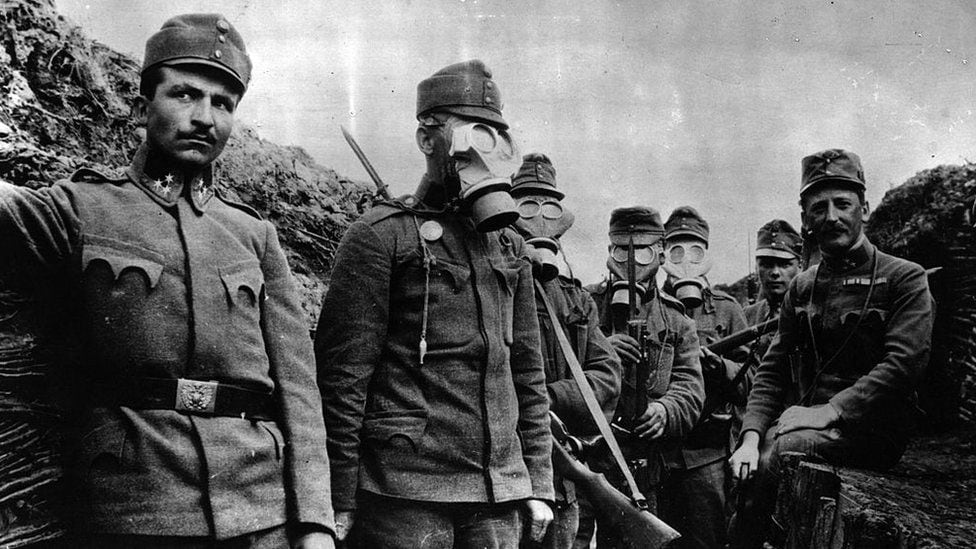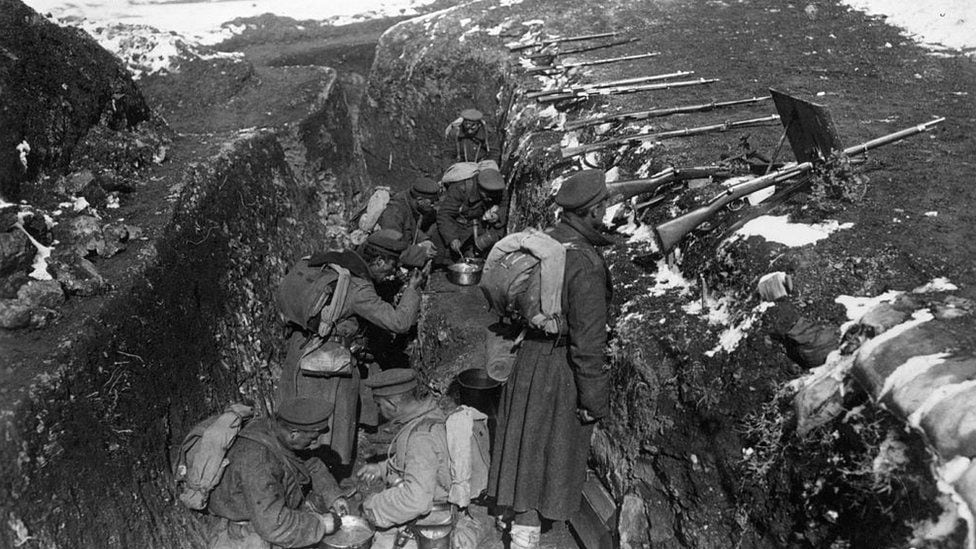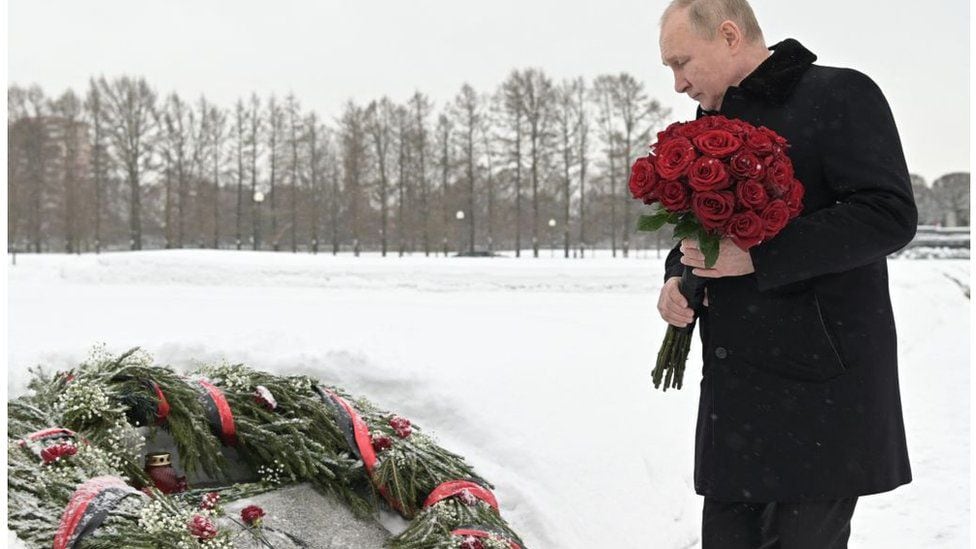Without electricity, water, heating or food. Most of the day, unable to communicate with the outside world, frightened by the roar of missiles and shrapnel.
“We are constantly bombarded. We are left with nothing,” Oksana, a resident of the Ukrainian city of Mariupol.
SIGHT: “Of the 10 brothers only I was left”: the incredible story of the survivors of the first atomic bomb test
For almost two weeks, the town, like so many others in Ukrainehas been relentlessly besieged by Russian troops.
Entire residential areas have been reduced to rubble and even hospitals and schools bear the dark scars of the bombs.
- Putin calls for foreign fighters to fight in Ukraine with Russian troops
- “Syria was the school of war for Russia to later invade Ukraine”
- The “children” of the USSR who are now escaping Russian attacks in Ukraine
Kremlin forces have cut off access to all basic services as the city freezes over in winter.
Images and testimonies from there show residents gathering in the streets, when the explosions allow it, to cook their food with pieces of tree trunks and, also, forming urban militias to face the siege.
“At least it’s snowing. There is snow, so there will be water, because snow can melt,” says Oksana.
For her, as for many other residents of the city, her reality is now linked to the terrible memory of one of the events that most marked the ex-Soviet republics: the siege that the former capital of the Russian empire experienced for almost 900 days.
SIGHT: “If Kharkiv falls, Ukraine falls”: the BBC on the battlefront with Ukrainian troops
“For many who live in Mariupol this situation is like the siege of Leningrad,” says Diana Kuryshko, a journalist for the BBC’s Ukrainian service.
The US Secretary of State, Anthony Blinken, associated the situation in the Ukrainian city with the current Russian city of Saint Petersburg, besieged by the Nazis.
“All Russians have learned about the siege of Leningrad during World War II. Sadly, history has repeated itself, but now it is the Russian government that cruelly starves Ukrainian cities,” Blinken wrote on Twitter.
The association between the sieges aroused signs of support, but also questioning among those who saw the comparison with one of the greatest tragedies in recent Russian history as disproportionate.
But for the historian Richard Bidlack, professor at Washington and Lee University and one of the most renowned international researchers on the siege of Leningrad, the association makes sense, beyond the duration and scope of both sieges.
“The historical parallelism is present: cities that are surrounded by invading troops, who cut off water, electricity and food to their inhabitants, who try to empty them with hunger and with missile and artillery fire. And also, with the popular resistance to the invader through militias… they are all common factors,” he tells BBC Mundo.
“Logically, it is difficult to make associations and comparisons when we talk about human lives, because in the end it is not about a competition about which event lasted longer or which one left fewer deaths. But it is true that when looking at the images of what is happening in some Ukrainian cities, mainly Mariupol, it is difficult not to associate them with what happened in Leningrad,” he adds
But what happened in this Russian city (now Saint Petersburg) and why is it remembered during the invasion of Ukraine?
the big fence
It was perhaps one of the most unexpected military decisions in history: in 1941, Hitler decided to break the non-aggression pact he had signed with Stalin and decided to launch himself against the Soviet Union.
The war now had a new front and the Nazi troops, with the initial help of Finland, part of whose territory had been invaded by the Red Army, launched against one of the most important and emblematic Soviet cities.
The capture of Leningrad – symbolic capital of the 1917 Revolution and of Bolshevism – was one of the three main objectives of the Operation BarbarossaHitler’s secret plan to invade the USSR.
But its importance went beyond what the city represented.
“Leningrad had many assets. It was responsible for about 10% of Soviet industrial production on the eve of the war, with several war plants, particularly in the southern districts of the city. And it also had a strategic position, because at the forefront , on an island, was the headquarters of the huge Baltic Fleet,” recalls Bidlack.
The Nazis attacked the city with everything they could. Hitler is said to have believed that it would fall in a matter of days.
But the resistance went beyond all expectations: the Germans failed to take control, which led to a humanitarian tragedy of great proportions.
“There was aerial bombardment and cross artillery fire. Germany’s hope was that by 1942, there would be essentially no people left in the city and they could occupy it. Their plan to take the city was to starve it and bomb it into submission,” the academic recalls. .

The more than 400 books that have been written about the siege of Leningrad agree that the worst moment was the first winter, when temperatures were freezing.
“No one knows exactly how many people died in Leningrad, but probably there were close to a million within the city alone. In my research, I calculated that probably between a third and 40% of the population did not manage to evacuate during the lockdown. For those who stayed, it was absolutely horrible,” says Bidlack.
“The road of life”
The Red Army managed to hold a narrow passage called “The Path of Life” through which some supplies managed to enter the city: it was a region of Lake Ladoga that was not occupied by the invading troops.
This did not prevent the fence from becoming a real carnage.
The Nazis did not allow humanitarian corridors and food became scarce. They also cut off access to power, heating and drinking water in the harsh winter.

Numerous testimonies say that some people came to eat pigeons or cats and even practice cannibalism to survive.
“The number of Soviets who died both inside Leningrad and fighting around the city exceeds the total number of Americans who died in all wars in which US troops have participated, from 1776 to the present. The loss of lives was just extraordinary,” says Bidlack.
The historian says that the resistance was also.
“Like what happens now in Ukraine, the residents of Leningrad also formed urban militias and went out to defend their city with Molotov cocktails. They received some weapons, old rifles, but usually their main defenses were bottles filled with gasoline. In fact, when I saw the images The first thing that came to my mind about the militias in Ukraine was that they were doing the same thing as in Leningrad,” he says.

It was not until January 1944, and after numerous operations and failed attempts, that the Soviet soldiers managed to break through the siege.
It had started on September 8, 1941 and lasted for 872 days: 2 years, 4 months and 19 days.
in his book “Leningrad: the tragedy of a besieged city”,historian Anna Reid describes it as “the deadliest blockade of a city in human history”.
Most experts, both Russian and Western, agree that the siege caused the greatest destruction and loss of life ever known in a modern city.
The impact
The siege of Leningrad has marked the Russian population for decades as one of the acts of greatest horror that they experienced during World War II.
“It is a fact that marked generations, including those of President Vladimir Putin himself, who was born in Leningrad and who has said that his parents almost died during the siege. In fact, one of his brothers died at that time.Bidlack recalls.
“Putin was born later, in 1952, but in his family the memory of those years was still very much alive and Putin grew up with these stories of the blockade and the siege,” he adds.
The academic points out that even one of Putin’s great friends, Yuri Kovalchuk, is, in fact, the son of one of the most celebrated Russian historians of the siege of Leningrad.
For years, the Russian leader has attended the tributes to the siege that are held in the cemetery of Piskarevsky, where an immense common grave keeps the remains of some of the victims.
“My brother, whom I never saw or met, was buried here, I don’t even know where exactly,” Putin said during a commemoration event in 2012.

Bidlack believes that the site has also marked the vision of the Russian president’s international policy.
“When we see their expressions about whether NATO wants to encircle Russia, their fears that Russia will be hemmed in by enemy countries, there are echoes of Leningrad there,” he says.
The historian recalls that Putin himself used the comparison of the siege when in 2014 Ukrainian forces bombed the rebel cities of Donbas.
For this reason, Bidlack finds it paradoxical that it is now the Russian troops who are carrying out a siege strategy similar to that practiced by the Germans against Leningrad.
“What we are seeing in Ukraine is a reversal of the Leningrad mythology: the nation that was defending itself from the troops of the invader besieging its city, has become the invader besieging a city in another neighboring country,” he says.
“While Putin has characterized the Ukrainian government and its fighters as fascists and neo-Nazis, the invasion in the last two weeks has in fact shown that Russia is the country that commits egregious human rights abuses and besieges cities in not-so-great ways.” different from those of the Nazi siege of Leningrad”, he concludes.
________________________________
- Putin says Western sanctions are like a ‘declaration of war’
- Ukraine shows on social networks the missile attack on a helicopter: “This is how the Russian occupiers die!” | VIDEO
- Visa and Mastercard suspend operations in Russia due to the invasion of Ukraine
- The strange act of Vladimir Putin between jokes, flowers and stewardesses in full offensive in Ukraine
- British journalists recorded the moment they were fired upon by Russian troops in Ukraine
- War correspondent in Ukraine: “No one imagined that this would happen with such brutality”
Source: Elcomercio

:quality(75)/cloudfront-us-east-1.images.arcpublishing.com/elcomercio/GE3TANRNGAZS2MJSKQYDAORRG4.jpg)

:quality(75)/cloudfront-us-east-1.images.arcpublishing.com/elcomercio/BFSB32EFLBDUZK3QEJYUQEUMZY.jpg)
:quality(75)/cloudfront-us-east-1.images.arcpublishing.com/elcomercio/6WHY5WF7YJAFBOFWKYHZNC2WAY.jpg)
:quality(75)/cloudfront-us-east-1.images.arcpublishing.com/elcomercio/WETFOGEJXNA3DNYBH7U2U74GMM.png)
:quality(75)/cloudfront-us-east-1.images.arcpublishing.com/elcomercio/7XBPETG4ONAO5DIYUNGJU2NXXQ.jpg)
